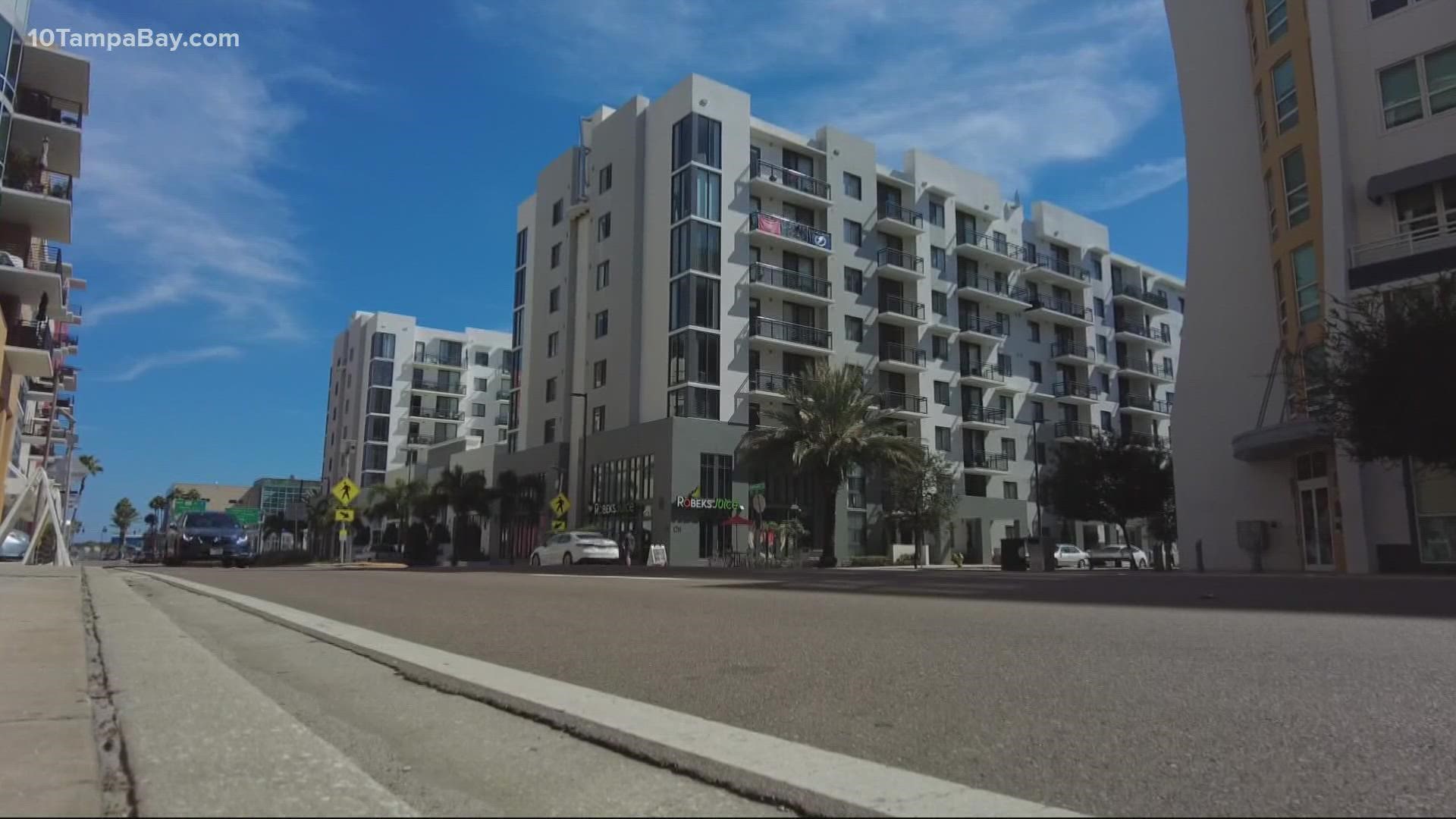TAMPA, Fla. — For so many people Tampa Bay’s hot housing market is overheated.
There just aren’t enough places to live for everyone who wants one, as prices continue to soar.
Tampa has been named the hottest housing market of 2022 by real estate site Zillow, which projects home values will grow by nearly 25 percent this year.
So what can you do if you feel like you’ve been locked out?
Nathan Hagen, a 30-year-old software developer and Bay area native, is re-focusing his frustration on reshaping the future of housing in Tampa.
Hagen tried and ultimately failed to find a house of his own when he moved back to the Bay area after college.
“We’ve been under contract on houses, but for one reason for another it doesn’t work out,” he recalled. “Eventually we were just like, we’re going to look at renting again and put this off for another year, which I think is a universal experience, and that’s what we did right before the pandemic.”
Like so many others, he and his partner just couldn’t compete anymore. They settled on renting, where they’re paying more than they’d like to – at the mercy of a landlord who they expect to raise rent on them – as the area’s housing shortage squeezes renters, too.
“Every time one person fails, you either have to quit or amp it up, you can’t just stay the course, in a market where everybody else is being competitive,” he said. “So it just feeds on itself, it’s impossible for a lot of people.”
Hagen says it's appropriate to call the situation what it is: a crisis.
“We are in a housing crisis," Hagen said. "I think everybody who watches your show probably knows somebody who’s been like, I wanted to live here but I can’t live here. That’s displacement. That is the result of not enough units of housing.”
Down, but not out
But Hagen isn’t giving up. He co-leads the local chapter of a national housing advocacy group called Yes in My Backyard, or YIMBY. It’s a play on the concept ‘not in my backyard.’
The nonprofit advocates for equitable policies to make housing affordable.
“We’ve just stopped building enough housing for our growth,” Hagen said. “We’re at a place now where most of the building we’ve been doing is single-family in-fill, which is taking one home away and putting a home in its place.”
Hagen says the area’s current housing crunch isn’t an accident – but argues it is rooted in the same planning framework that’s been the blueprint for development in the city since the first zoning codes were written in the 1940s.
“We have chosen, as a community, over the course of the last 80 years to make it very difficult to build housing that meets the needs of people, especially working people and people of color who’ve been struggling to make in Tampa for a long time,” Hagen said.
According to analysis by the Urban Land Institute, nearly 80 percent of Tampa’s land parcels are zoned exclusively for single-family housing. Hagen says it’s not just about being able to build more housing – but different types of housing – to meet the needs of the community.
“If you cannot build anything other than what is already on it, you cannot build more housing,” he said. “My number one goal is just to educate people on what the options are we haven’t explored that we have an opportunity to explore this year."
Opportunity
Every 5-7 years, the city of Tampa revises its comprehensive plan. It just so happens this is that year.
Hagen sees it as a big opportunity to have a big impact on the future of development and housing.
Stephen Benson, Tampa’s director of city planning, says the comprehensive plan functions like a legal document, laying out the rules and procedures for how to chart a roadmap for future land use, transportation, housing and sustainability.
With the last revision in 2016, Benson agrees this review comes at a critical time. Another 100,000 people are projected to move to Tampa in the next 20 years, Benson said, and the city will need at least 75,000 more homes to accommodate that type of growth.
“We think this update is going to be more of a major update because it only makes sense with the growth and change that you see every day in our neighborhoods,” Benson said.
The first major component of the review will look at land use, according to Benson, which will set the stage for discussions on rezoning.
Equitable planning
Benson says planning for equity – more inclusionary zoning – is a major objective for the city.
“There is a trend toward looking at those areas where the only thing you’re allowed to do is put a single family house back,” he said. “Having a variety of different housing types that still fits within that single family feel or vibe is what inclusionary zoning is.”
Initial conversations on the comprehensive plan review will begin with city council at the end of February with more community conversations and forums to follow.

